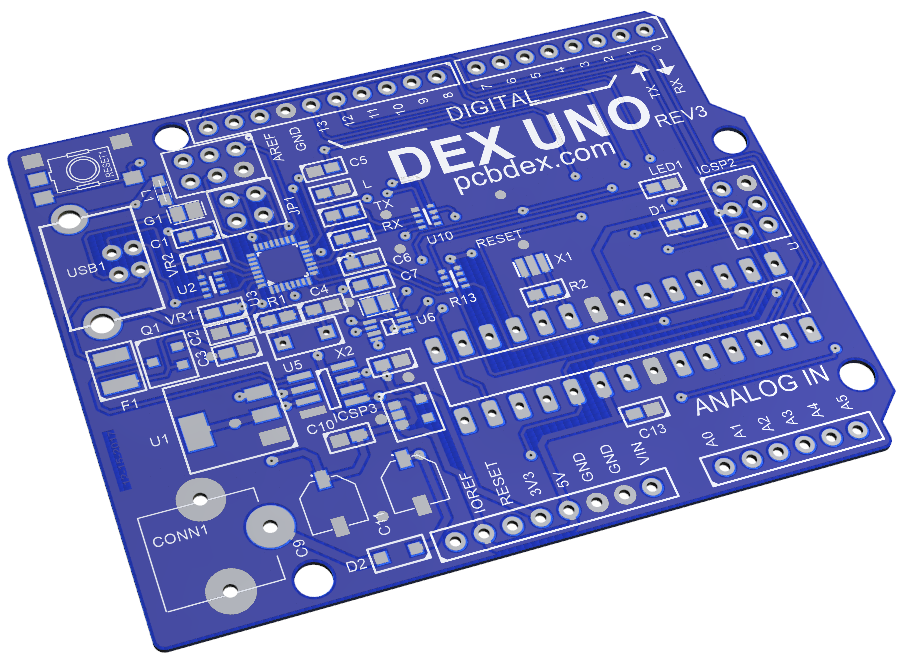PCB stands for Printed Circuit Board. It is a board made of non-conductive material (usually fiberglass or plastic) that contains a pattern of conductive traces and components. PCBs are used to provide mechanical support and electrical connections for electronic components, and are found in a wide range of electronic devices, from simple toys and appliances to complex computers and communication systems.

Typical 2-Sided PCB
The conductive traces on a PCB are typically made of copper, and are arranged in a specific pattern that allows the electrical signals to flow between the components. The components are mounted on the surface of the PCB using a variety of methods, including through-hole and surface mount technology (SMT).
PCBs can be single-sided or double-sided, depending on the complexity of the circuit. In addition, PCBs can have multiple layers of conductive traces and components, which are separated by insulating layers. These multilayer PCBs are used in more complex electronic devices, where space is limited and the circuitry is more intricate.
PCB design involves a range of factors, including selecting the appropriate components, arranging them on the board, routing the conductive traces, and ensuring that the board meets the necessary electrical and mechanical specifications. PCBs can be designed using specialized software tools, and are manufactured using a variety of processes, including etching, milling, and drilling.
A PCB (Printed Circuit Board) is a board made of insulating material such as fiberglass or plastic, with conductive pathways etched onto its surface. PCBs are used to provide a physical platform for electronic components to be mounted and connected in a circuit. The conductive pathways on the board are usually made of copper and are designed to carry electrical signals and power between the components.
PCBs are widely used in the manufacturing of electronic devices and equipment, including computers, smart-phones, televisions, and medical equipment. They are often designed using specialized software and produced in large quantities using automated processes. PCBs can be single-layer or multi-layer, with the latter offering more complex and compact circuit designs.
Overall, PCBs are an essential component of modern electronics, enabling the efficient and reliable transfer of electrical signals between components.